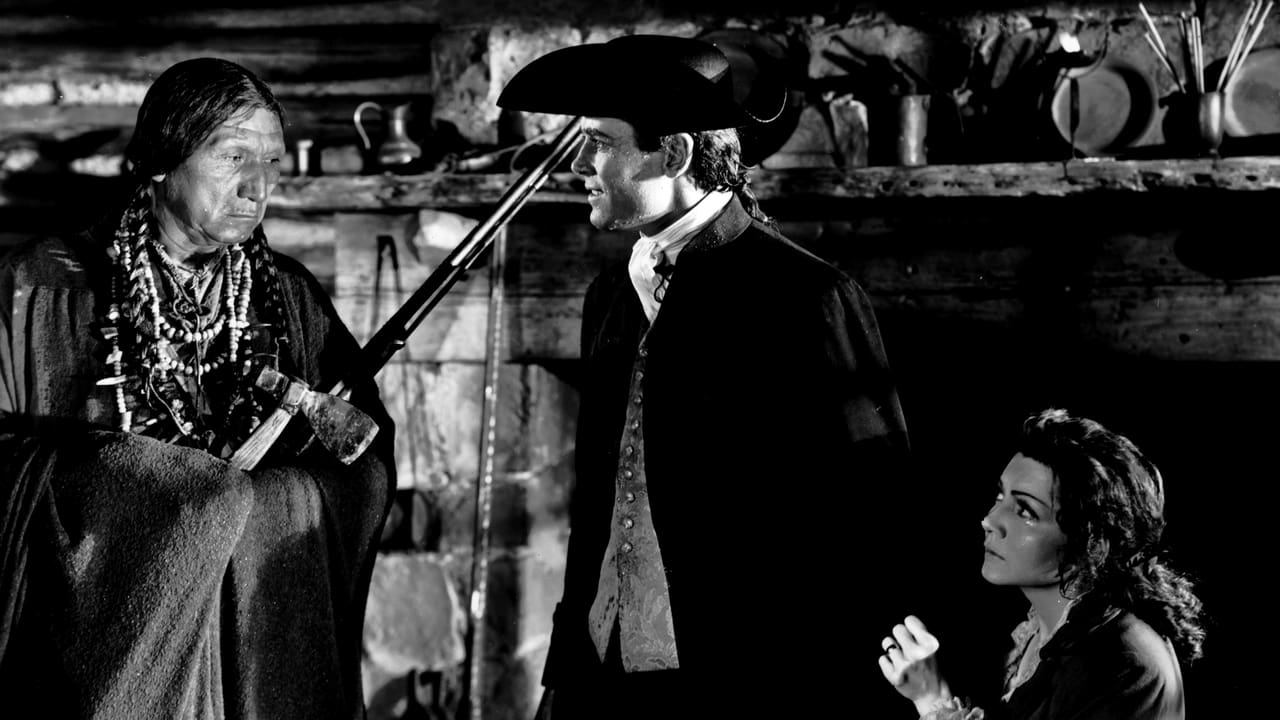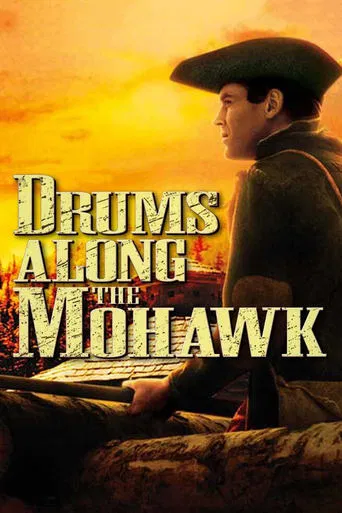

There are a Couple Things that make this an Endurable John Ford Sermon. The Early Technicolor, and a Few Good Scenes of Tension and Battle. What is Hardly Endurable is the Preaching and Overacting that is Typical Ford. The Overt Sentimentality and Overplaying Certain Aspects that were so Near and Dear to the Director.The Birthing Baby Scene just goes on Forever and becomes Somewhat Intolerable, the Cartoonish Characters like the Happy Drunk (even while being tortured and burned to death), Patriotism as Religion, and just so much Heavy Handedness. Then there's Propaganda like Fonda's (read American) Proclaiming, "No Indian alive can outrun me!".But it is an Entertaining Film and the Final Siege at the Fort is Stunning in its Gripping Brutality. Fonda and Colbert are All Right and Edna May Oliver is again a Scene Stealer, but the Supporting Cast is nothing but a Silly Conglomerate of Overt Stereotypes and Overacting.Certainly Worth a Watch for the Aforementioned Good Parts, but Far from a Classic or Enticing Cinema. That is Typical of most John Ford Stuff. Some rather Great Scenes, but His Movies as a Complete Piece of Art, Generally with a Few Exceptions, cannot Withstand the Weight of Ford's Ego.
... View MoreA regular John Ford classic. Claudette Colbert played her role well, but her character was initially quite unlikeable. I suppose this was to show her personal growth over the course of the film. Fonda was, of course, Fonda, a bottomless pit of earnestness. Edna May Oliver was wonderful as the widow. She got an Ocar nomination, but too bad for her that this was the same year as Gone With the Wind and Hattie McDaniel.A few commentators have lamented that Ford caricatured the Indians and portrayed them as unfairly savage. If anything they were portrayed as not nearly as savage as reality. The North American Indians in general, and the Iriquois in particular, were among the most savage and bloodthirsty races on earth. At least two instances from the film struck me letting them off much too easy. When the widow McKlennar is surprised in her bed by two warriors burning her house, she browbeats them into carrying her out of the room on her bed. These Indians would have immediately tomahawked her to death on the spot. And when the captive is rolled out to be burnt below the walls of the fort, well, the Indians would almost certainly have tortured him to death for their own amusement. There was no military advantage to letting the fort know that he was captured, and the Indians torture of captives was well known. It was a large part of their culture. which was utterly martial. The fort would never surrender, because only torture and death awaited those who did. (On rare occasions captives would be kept alive as slaves, and rarer still, a few were adopted into the tribe) The British would sometimes encourage these massacres, and sometimes try to stop them, almost never with any success. No amount of politically correct revisionism changes what these Indian societies were in those days.
... View MoreI could not believe this story is about war history because the movie began with the scene of the beautiful wedding. Besides, there were many soft musics that performed in the beginning. I thought this movie would have been the romantic movie. However, this movie attracted me because it introduced the life of people in rural. I watched many movies ,but they usually were about the life of people in urban, so it was like I learned another taste of movies. It was natural. Moreover, The scene that was about the war was exciting because there were a lot of shooting and using many kinds of weapon. A lot of people were used to perform the scene of the war that helps the audience get the feeling of war. In addition ,it was a good opportunity to learn the strategy of the war in that era. Another scene that I like when the three indians was chasing the main actor, and they were running on the mountain on the background of the sunrise. It helps me imagine this is very long running. Nevertheless, I think there is the problem of the color of the movie because I could not see the detail in far vision.
... View MoreDrum along the Mohawk was John Fords first film that he used Technicolor in. The scenery and the colors in the film were great to see. The emotions on Lana and Gilbert Martins face were good. Especially in the scene where the Indians burn their house down. As they are getting ready to leave the camera focuses back on the house being burnt and then right to their faces and you can tell that they knew they lost everything. The sounds of the gun shots and canon being let off during the fight between the town and the Indians was a great scene to see and hear. You could tell the Indians were coming cause they would chant or you would see smoke from them burning houses down. In the end the town won by the help that Gil went to get.
... View More